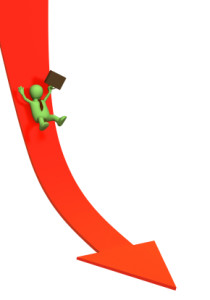by gabriel_sales | Nov 15, 2013
 In our previous blog post, we explained that the number one b2b selling mistake made today is selling too hard too soon. This blog outlines strategies for how not to make this mistake.
In our previous blog post, we explained that the number one b2b selling mistake made today is selling too hard too soon. This blog outlines strategies for how not to make this mistake.
In order sell in the right way at the right time, you need to understand where your prospect is in their buying cycle. The first way to do this is simple: listen to what they say.
If your prospect tells you he or she is looking for a solution for X but probably won’t have budget until next year, do not try to sell now. Instead, offer him or her basic, educational marketing content (like blogs, white papers, YouTube videos, etc.) that is nonthreatening but will keep your company’s name top of mind until your prospect has budget. If on the other hand, your prospect says they are trying to make a decision by the end of the week, it is the right time to pitch—hard.
A lot of times, however, your prospect is not going to be this direct, and you will have to use alternative means of determining when and when not to sell. This is where content marketing programs and marketing automation software become extremely valuable.
By mapping out your buying cycle and developing different pieces of marketing content to match each stage, you can then use a marketing automation platform to track which prospects are engaging in which content. When a prospect engages in first stage content, you know they need to be nurtured more. If a prospect clicks on a pricing page, it is probably time to pick up the phone.
By listening to your prospects’ behaviors—both explicitly and implicitly—you can ensure you don’t annoy or anger your prospects into going somewhere else because you tried to sell to hard too fast. When your prospects feel that you are listening to them and truly understand their needs, they are more likely to come back to you when they are ready to be sold.
To learn more about how people’s buying habits have changed in recent years and what to do to adapt, read our recent blog article called, “The Shift to ‘Bought, then Sold’”. Please feel free to contact us with any questions.
by gabriel_sales | Nov 14, 2013
 Most people working in sales today received their training from a generation of traditional salesmen who followed the traditional sales model. This model says to jump on new leads as soon as possible and sell hard and fast until the deal is closed.
Most people working in sales today received their training from a generation of traditional salesmen who followed the traditional sales model. This model says to jump on new leads as soon as possible and sell hard and fast until the deal is closed.
The thing that most salespeople today forget is that the traditional sales model was a product of its environment and today, that environment looks radically different.
In past decades, consumers had limited options for getting information on the products and services available to them and were therefore essentially forced into listening to high-pressured sales pitches. Today, consumers have the internet, smart phones and other digital technologies to help them learn about their buying options and make informed purchase decisions. What’s more, they have technologies like caller ID, spam filters and DVRs aimed at blocking out high-pressured sales pitches.
In this new type of sales environment, the number one mistake a salesman can make is selling too hard too fast.
If you try to sell too hard too soon, from the prospects’ perspective, you have become equivalent to that annoying TV commercial they fast forward through. They may have a need for your product/service one day, but because you were pushy and annoyed them instead of offering authentic information and guidance, they are going to go to your competitor.
In order to not make this mistake, you need to understand where your prospect is in their buying cycle to decide when and how to sell to them.
To continue reading, click here.
by gabriel_sales | Nov 12, 2013
 Nearly every business today is looking for ways to generate more leads and close more deals. Many companies are now looking to marketing automation as a means to achieve this and end up dissatisfied with the results.
Nearly every business today is looking for ways to generate more leads and close more deals. Many companies are now looking to marketing automation as a means to achieve this and end up dissatisfied with the results.
The reasons for dissatisfaction vary; some are challenged by the complexity of the software itself, others are frustrated by the software’s lack of integration with sales. Whatever the reason, we believe dissatisfaction with marketing automation stems from the same misunderstanding.
Many companies today see marketing automation as a be-all end-all solution to their marketing and sales problems. The problem with this line of thinking is that marketing automation is not a solution; it is a tool.
Let’s say you’re trying to build a house. You can buy the most expensive and high-tech drill available, but you still need blueprints, money, materials and a lot of hard work to get the house built. The same goes for marketing automation software. You can get the most expensive one or the one with the most features, but unless you have strategy, content, sales technologies and dedicated staff behind it, it is not going to work like you want it to.
Marketing automation platforms work best when they are a part of an integrated sales and marketing program. An integrated program combines sales pipeline management, content marketing, SEO and social media into a unified effort where each part supports and reinforces the others. A marketing automation tool acts like a connecting thread between the other parts, keeping track of all data and giving you valuable insights about your customers as well as the effectiveness of your various marketing tactics.
When used in this way, marketing automation can have dramatic results. In fact, with a commitment to this type of alignment, you can expect substantial revenue (157% growth) at a decreased cost of sale within 18 months to pull away from the competition.
If you’d like to know more about how B2B sales and marketing has changed in recent years, watch this quick video called, “The New Rules of Buying and Selling.” If you have any questions, please feel free to contact us.
by gabriel_sales | Nov 11, 2013

This is the part-two of a blog series on selling B2B consulting. Click here for part one.
2. Focus on technical expertise and tactics rather than ‘big picture’ results.
When engaged in selling, it is very easy for consultants to emphasize how great they are at specific tasks or skill sets. While this information become relevant during later stages of the buying process and the delivery phase, it does not help ease your prospects worries concerning risk when they are considering a purchase. In other words, people want holes, not shovels. When selling B2B consulting, you need to help your prospects envision an end-state where their problems are solved before you get into technical details. Only once your prospects share your vision for the future will they listen to the tactical steps of how you are going to take them there.
3. Attempt to maintain control over the prospect and situation.
In any selling situation, there are going to be power dynamics involved. While it is rational to want to maintain some type of control or advantage to reduce perceived risk, this is not the way to get your prospects to trust you. This is because buyers are now used to controlling the sales cycle for most of their purchases and will react negatively if you try to take their buying power away.
Furthermore, because consulting services are perceived as high-risk purchases, selling consulting happens through a process of collaborative solutioning to build trust. The keywords are ‘collaborative’ and ‘trust’. This means anything you can do to make your prospects feel like your relationship is a team-effort (and that you are not trying to ‘pull a fast one’ on them) will help. Helping your customers succeed should always be your ultimate measure of your success.
For more on selling B2B consulting services, watch this quick video on Selling Professional Services. If you have any questions, please feel free to contact us.
by gabriel_sales | Nov 8, 2013
 A B2B consulting sale has always been something that is truly difficult. This is because the B2B consulting sale involves several unique aspects that aren’t found in other type of sales.
A B2B consulting sale has always been something that is truly difficult. This is because the B2B consulting sale involves several unique aspects that aren’t found in other type of sales.
First, from the customer’s perspective, consulting is a high-risk purchase as the risk to benefit ration is considerably higher than other kinds of purchases. B2B Consulting sales also carry underlying emotional risks for the prospect (i.e. risk of public failure), which may not get talked about explicitly, but need to be addressed somehow.
In order to sell B2B consulting services, you need to do everything you can to reduce the perceived level of risk and generate trust. To demonstrate this idea, here are three things not to do when selling consulting.
3 Ways to Lose a B2B Consulting Sale:
- Don’t listen; jump to conclusions.
Because selling consulting inherently involves a high level of risk, it is imperative that prospects feel like their needs have been understood. As a part of building trust with your prospect, you need to take all of the time it requires to get everything out on the table. This means asking follow-up questions—both to set context and to gauge underlying emotions.
Additionally, it is one thing to listen, but it is another thing to make your prospect feel heard. To do this, you need to affirm that you are hearing your prospects words by restating or paraphrasing what has just been said. Until you have proved that you have a clear grasp on their pains, needs and goals, your prospect will be closed to hearing your solutions.
To continue reading, click here.
 In our previous blog post, we explained that the number one b2b selling mistake made today is selling too hard too soon. This blog outlines strategies for how not to make this mistake.
In our previous blog post, we explained that the number one b2b selling mistake made today is selling too hard too soon. This blog outlines strategies for how not to make this mistake.




